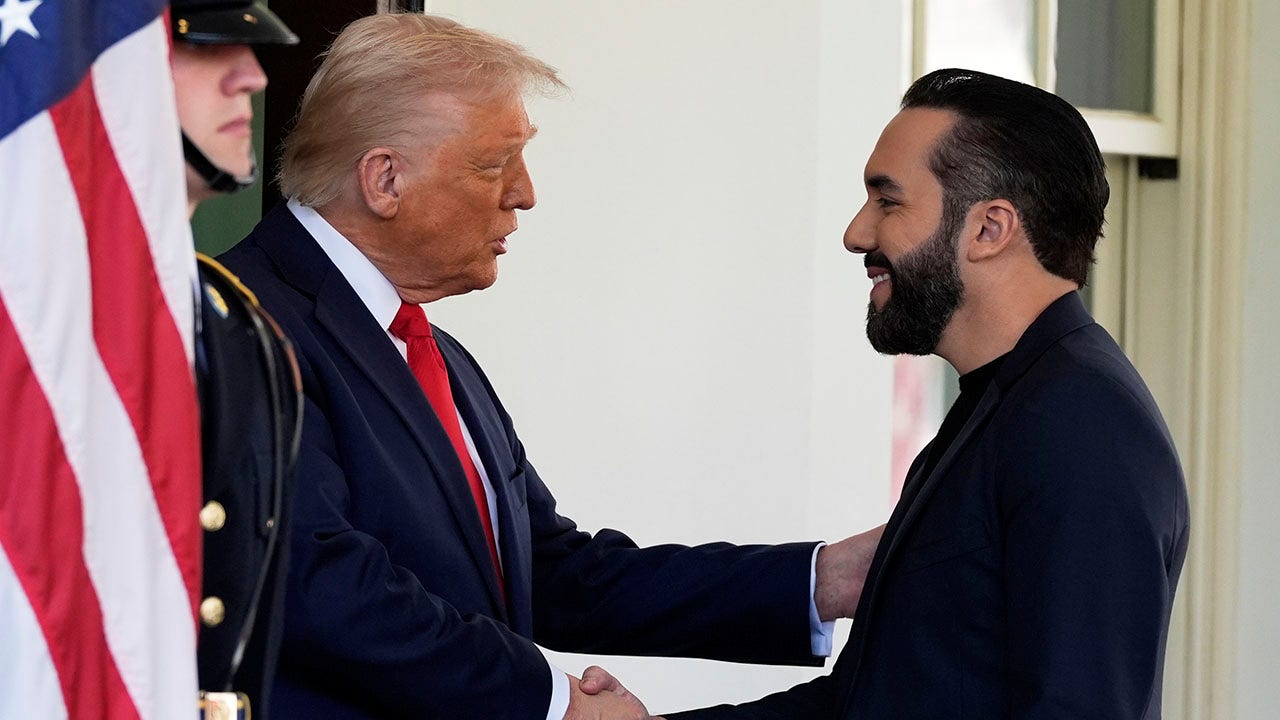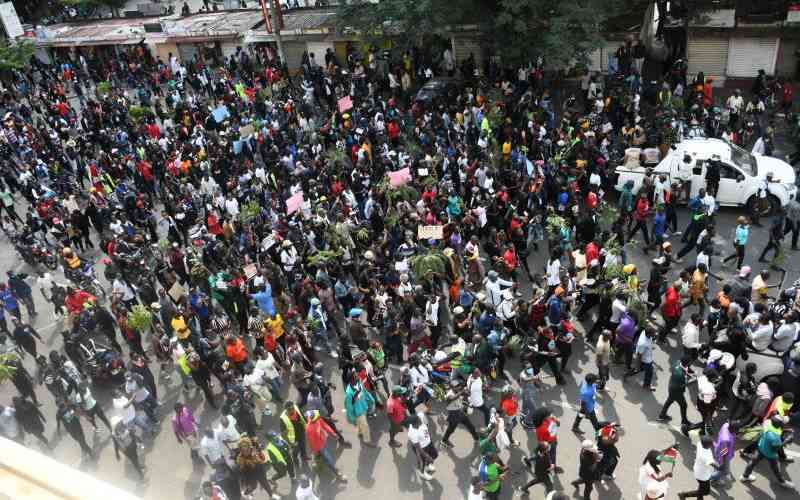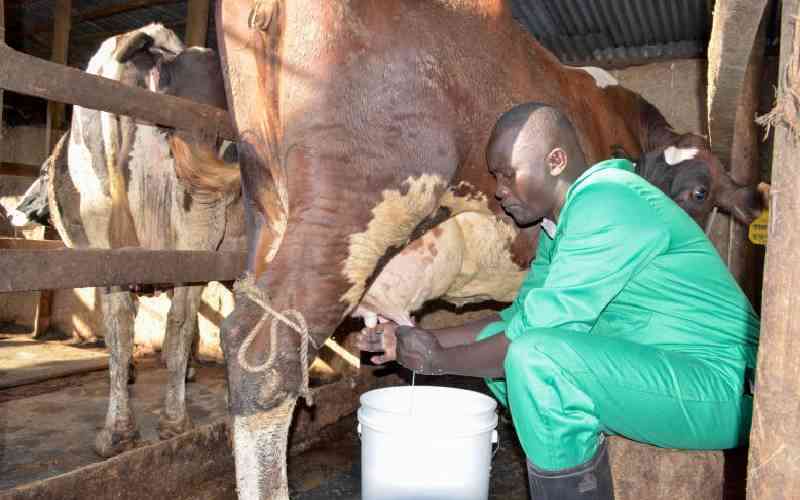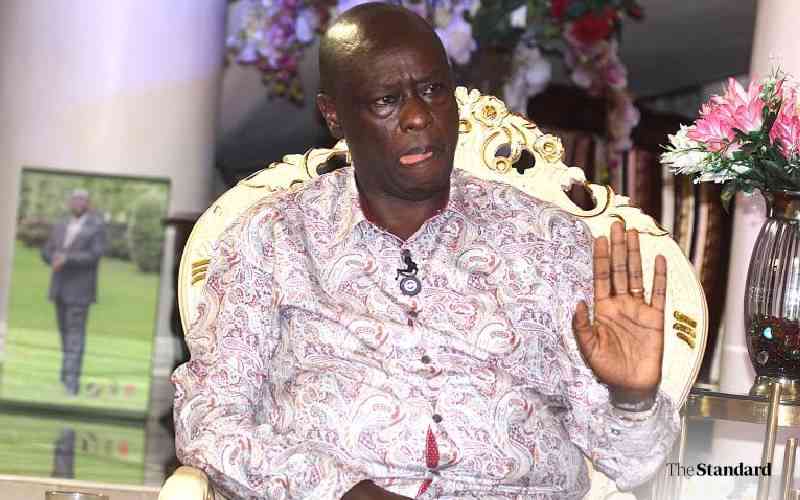The year 2024 was marked by increasing dissatisfaction with President William Ruto’s administration.
Economic hardships, including the high cost of living, rising public debt, corruption, and high unemployment, intensified public discontent.
The government’s perceived inability to address these challenges effectively fueled protests and civil unrest.
Countrywide protests organized by Generation Z through social media captured the world’s attention. Opposition figures capitalized on the situation to mobilize their supporters to oppose the new punitive tax measures.
The Finance Bill 2024, introduced in May, triggered the unrest.
Many Kenyans felt the Finance Bill needed to be in touch with their economic realities, imposing an additional, unaffordable cost burden.
It sparked widespread outrage and provoked the #RejectFinanceBill online movement.
However, officials’ response was defiant political rhetoric supporting the Bill, which ignited the protests.
Young people moved from online platforms to the streets and became the voice of opposition to the Bill.
They turned up in masses across the country, adorned chiefly in black, waving placards and the Kenyan flag, chanting, singing, and demanding to be heard.
The magnitude was astounding, ushering an instantaneous shift in Kenyan politics.
What appeared to be a “routine” practice by past and present administrations to outline various tax proposals and amendments to increase government revenue triggered extensive public debate and dissatisfaction with the Kenya Kwanza government.
The protestors, mainly young people, were unhappy with the government’s handling of economic issues, unemployment, and corruption.
Stay informed. Subscribe to our newsletter
In well-crowded protests planned via social media, the youth raised general questions on accountability, transparency, and the opulence of senior government officials and political figures to a predominantly low-income populace.
This period of civil unrest exposed longstanding clefts in the country’s political and social fabric, raising concerns about the nation’s political stability.
Thousands of protestors, predominantly young people self-identifying as Generation Z, poured into the streets of major cities, towns, and urban centres in dissent against the controversial Finance Bill 2024. They would later broaden their agenda to demand President Ruto address inequality, corruption, and elite politics.
This unrest erupted in June with young people dissatisfied with the government’s handling of economic issues, particularly the high cost of living and the unemployment rate.
Kimani wa Kimani, a youth leader in Nakuru County, recalls that the high cost of living, exacerbated by global economic challenges and local mismanagement that severely affected the middle class and lower-income earners, further fueled the unrest.
“Additionally, allegations of corruption and governance failures further windswept public trust in government,” he adds.
The June 25 storming of the National Assembly in Nairobi was the peak of the public uproar, as demonstrators burned vehicles in front of the Supreme Court and set the office of the Nairobi governor on fire.
Professor of management and leadership Gitile Naituli says the unrest also brought to the fore the issue of excessive force in response to demonstrations.
“The police fired live bullets to disperse crowds, killing protestors and injuring hundreds,” Naituli recalls.
Though protests started peacefully, they ended tragically for some due to clashes with the police.
As of August, 55 young Kenyans had lost their lives in the protests, and at least 32 had been subject to abductions and arbitrary arrests.
“The unrest compelled Ruto to make significant changes to his government in response to mounting pressure from the public,” Naituli recalls.
The unrest eventually led to a “political settlement” between the two main political rivals.
Faced with the political crisis and the threat of further instability, Ruto made strategic changes to stabilise his government, bringing broader legitimacy across the political divide.
He contacted ODM leader Raila Odinga and co-opted the opposition party members into key strategic ministerial positions.
The move saw notable opposition political figures like Wycliffe Oparanya, Hassan Ali Joho, John Mbadi and Opiyo Wadayi appointed to the Cabinet.
Analysts say the unrest changed the country’s political direction dramatically, making it clear that the nation’s youth can no longer be ignored when discussing public interest issues.
“The protests indicated that they are informed and can effect change in the country. They bridged the gap between the older generation, especially those who hold critical public offices and the youth,” observed Harun Kipchumba, a former nominated senator.
The rebellion has also witnessed the entry of a new political player in national politics in the name of Busia Senator Okiya Omtatah.
Omtatah, a fierce critic of Ruto, said he intends to enter the presidential race after careful consideration and consultations with trusted advisers.
The first-term senator is known nationwide for his advocacy for citizen-friendly policies like lowering the cost of living and arresting and prosecuting corrupt officials.
The impeachment of Deputy President Rigathi Gachagua was the highlight of the 2024 politics.
The impeachment motion on October 16, 2024, climaxed a deteriorating relationship between President Ruto and his deputy.
Gachagua was picked as Ruto’s running mate on the solid backing of his stronghold in Mt Kenya, which served as a bulwark against such a political purge.
But as the script went, neither his Mt Kenya backyard nor the political opposition wanted to save him.
The public could not sympathize with Gachagua either.
He seemed to have made too many enemies, and they inadvertently united at his most vulnerable political moment to hound him out of office.
Political pundits point at Gachagua’s divisive rhetoric and tribal vanguard, which placed him in a precarious position with the government as he served a section of the opposition.
Gachagua was often heard on national media quelling his Mt Kenya backyard by assuring them of more “shares’ in government.
By “shares”, he implied a share of government positions; he explicitly pledged more positions to his ethnic group in the pending appointments.
The appointment of Kithure Kindiki as the Deputy President gave the office a fresh feel as he knows the expectations the Constitution and the republic have for him.
During his inauguration, Ruto asked him to communicate the government agenda better, which might redeem the government’s standing before the public.
Another key political highlight of 2024 is the Ichaweri handshake between President Ruto and his predecessor, Uhuru Kenyatta.
On December 9, Ruto visited Uhuru at his rural home in Ichaweri village in Gatundu South, Kiambu County.
The surprise meeting sparked a significant political debate, with political observers claiming it might have serious political ramifications for 2027 presidential aspirants.
Additionally, political observers claim that Wiper Party leader Kalonzo Musyoka and former deputy president Gachagua are trying to create an alliance to grab power from Ruto during the 2027 general elections.
The Ichaweri meeting is considered part of a broad strategy to accommodate more political players in the broad-based government.



















Discussion about this post